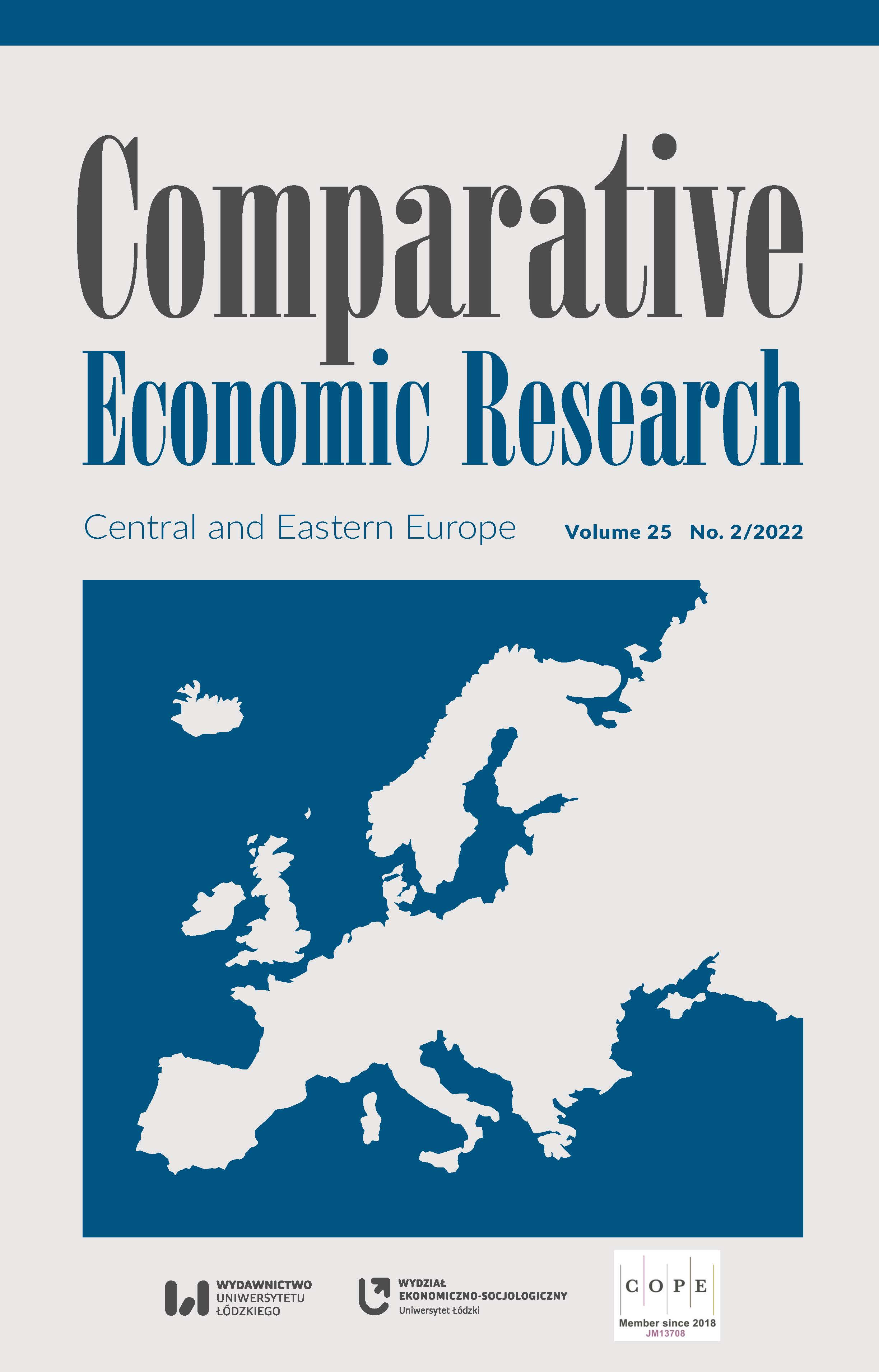Integration of Ukraine to the Global Value Chains
DOI:
https://doi.org/10.18778/1508-2008.25.17Keywords:
international trade, integration, global value chains, export, import, high‑tech goodsAbstract
The article considers the theoretical and methodological approaches to global value chains when measuring international trade. Global trends in the modern development of international trade are analysed, and the main challenges of international trade policy for Ukraine are characterised. It is established that the modern structure of the Ukrainian economy was formed under the influence of external factors. The authors propose that, over time, the influence of the global economy on the dynamics and structure of the Ukrainian economy will continually intensify. The prospects of Ukraine’s integration into global value chains are examined, and the authors found that the structure of Ukrainian exports of goods coincides with the structure of world exports only partially. Ukrainian export of goods is characterised by a low share of highly processed industrial products and a high share of low value‑added products, in particular, basic metals and agriculture and food industry products. The export of domestic high‑tech goods is constantly decreasing compared to developed countries, and its share in the world export of high‑tech goods is insignificant. To ensure the acceleration of GDP growth in Ukraine, it is important not only to increase exports, but also to increase the export of high‑tech goods.
Downloads
References
Antras, Pol. (2020), Conceptual Aspects of Global Value Chains, “Policy Research Working Paper”, World Bank, Washington, DC. World Bank. No. 9114, https://doi.org/10.1596/1813-9450-9114
Google Scholar
Antràs, P., Garicano, L., Rossi‑Hansberg, E. (2008), Organizing offshoring: Middle managers and communication costs, The Organization of Firms in a Global Economy, Harvard University Press, Cambridge MA, p. 311, https://doi.org/10.4159/9780674038547-010
Google Scholar
Bila knyha. Yak realizuvaty eksportnyi potentsial Ukrainy za umov hlobalizatsii. Propozytsii shchodo polityky spryiannia rozvytku ukrainskoho eksportu (2016), Instytut ekonomichnykh doslidzhen ta politychnykh konsultatsii, Kyiv.
Google Scholar
Daudin, G., Rifflart, Ch., Schweisguth, D. (2011), Who Produces for Whom in the World Economy?, “The Canadian Journal of Economics”, 44 (4), pp. 1403–1437. https://doi.org/10.1111/j.1540-5982.2011.01679.x
Google Scholar
DOI: https://doi.org/10.1111/j.1540-5982.2011.01679.x
Fortunato, P. (2020), How COVID–19 is changing global value chains, UNCTAD, https://unctad.org/fr/node/27709 (accessed: 5.01.2022).
Google Scholar
Freeman, C. (1987), Technology policy and economic performance; lessons from Japan, Frances Printer Publishers, London–New York.
Google Scholar
Geref, G., Humphrey, J., Kaplinsky, R., Sturgeon, T.J. (2001), Introduction: Globalisation, Value Chains and Development, IDS Bulletin, 32 (3), pp. 1–8, https://doi.org/10.1111/j.1759-5436.2001.mp32003001.x
Google Scholar
DOI: https://doi.org/10.1111/j.1759-5436.2001.mp32003001.x
Global Value Chains After the COVID–19 Crisis (2021), Global Trade and Innovation Policy Alliance, https://www2.itif.org/2021-gtipa-value-chains-covid.pdf (accessed: 5.01.2022).
Google Scholar
Grossman, G., RossiHansberg, E. (2012), Task trade between similar countries, “Econometrica”, 80 (2), pp. 593–629, https://doi.org/10.3982/ECTA8700
Google Scholar
DOI: https://doi.org/10.3982/ECTA8700
Kravtsova, I. (2016), Metodyka doslidzhennia hlobalnykh lantsiuhiv stvorennia vartosti. Naukovyi visnyk Mizhnarodnoho humanitarnoho universytetu, “Seriia: Ekonomika i menedzhment”, Vyp. 16, pp. 39–45.
Google Scholar
Marushchak, N. (2017), Hlobalni lantsiuhy dodanoi vartosti v konteksti ekonomichnoi intehratsii Ukrainy, “Prychornomorski ekonomichni studii”, Vyp. 24, pp. 30–35.
Google Scholar
Maurer, A., Degain, C. (2010), Globalization and trade flows: what you see is not what you get! WTO, Staff Working paper, 10, https://doi.org/10.2139/ssrn.1656826
Google Scholar
DOI: https://doi.org/10.2139/ssrn.1656826
Motoryn, R., Prykhodko, K. (2015), Metodolohichni pidkhody shchodo vymiriuvannia hlobalnykh lantsiuhiv dodanoi vartosti v mizhnarodnii torhivli. Zovnishnia torhivlia: ekonomika, finansy, pravo, “Seriia: Ekonomichni nauky”, № 5–6, pp. 25–26.
Google Scholar
Nelson, R.R., Winter, S.G. (1982), An evolutionary theory of economic change, Belknap Press/Harvard University Press, Cambridge.
Google Scholar
OECD (2013), Trade in value‑added: concepts, methodologies and challenges (joint oecd‑wto note), http://www.oecd.org/sti/ind/49894138.pdf (accessed: 6.01.2022).
Google Scholar
Porter, M.E. (1985), The Competitive Advantage: Creating and Sustaining Superior Performance, Free Press, New York.
Google Scholar
Porter, M.E. (1990), The Competitive Advantage of Nations, New York: Free Press.
Google Scholar
DOI: https://doi.org/10.1007/978-1-349-11336-1
Yaroshchuk, O., Okhrimenko, O. (2020), Intehratsiia vitchyznianykh naukomistkykh vyrobnytstv u hlobalni lantsiuhy dodanoi vartosti. Aktualni problemy ekonomiky ta upravlinnia, № 14, http://ape.fmm.kpi.ua/article/view/190757 (accessed: 6.01.2022).
Google Scholar
Downloads
Published
How to Cite
Issue
Section
License

This work is licensed under a Creative Commons Attribution-NonCommercial-NoDerivatives 4.0 International License.











